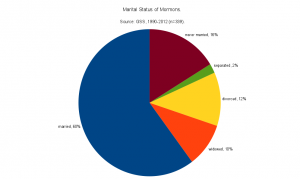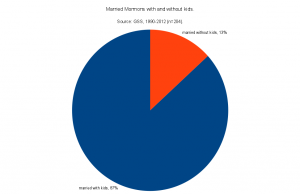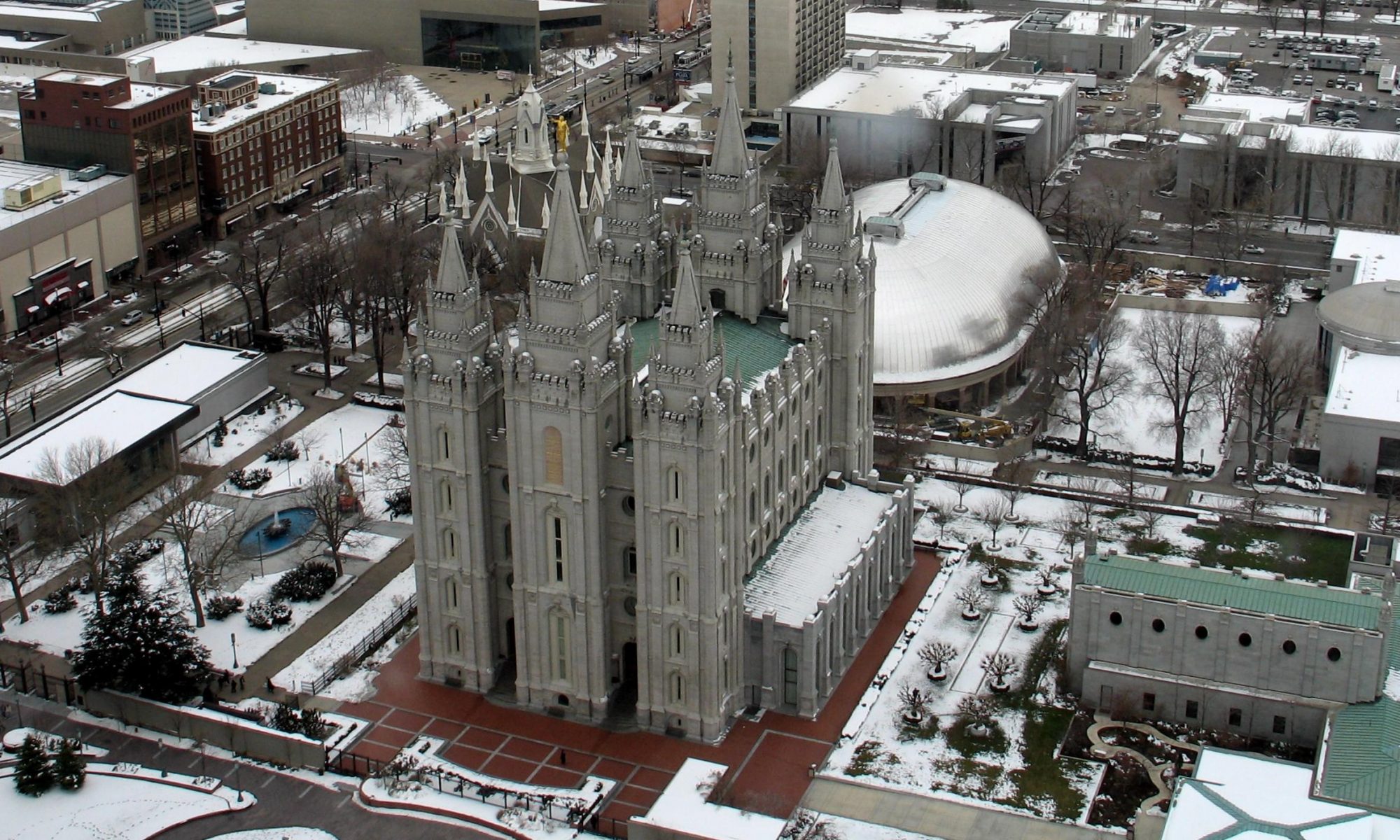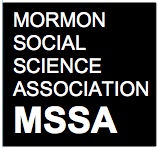The Research Information Division of the LDS Church is hiring. Please see this letter and the job posting for more information.
Ask an Expert: Mormon concept of God?
Q: I am writing a paper on the concept and image of God in Mormonism (with a focus on the LDS Church). My question therefore is, if you can name any specific ‘must read’ articles that deal with this topic? Are there any scholars, Mormon or from other denominations, that have particularly dealt with this topic, it’s historical development and effect on the religious lives of Mormons?
A: We had two very helpful answers from the members of the MSSA.
First, David Knowlton provided the following reference:
Hale,Van. (1989) Defining the Contemporary Mormon Concept of God, in Gary James Bergera, ed. Line Upon Line: Essays on Mormon Doctrine, SLC, UT: Signature Press.
In that chapter, Van Hale details the Mormon conception of God. Also of note, the subsequent chapter, The Earliest Mormon Concept of God, by Dan Vogel, is also insightful.
Mary Lou McNamara also suggested that the person asking the question may be interested in Mormon conceptions of female deity, or Heavenly Mother. A good essay on this is the following:
Wilcox, Linda P. 1992. “The Mormon Concept of a Mother in Heaven.” Pp. 64–77 in Sisters in spirit: Mormon women in historical and cultural perspective, edited by Maureen Ursenbach Beecher and Lavina Fielding Anderson. Urbana: University of Illinois Press.
Applied Social Science Research Manager for the Research Information Division of the LDS Church
There is a job opening in the Research Information Division of The Church of Jesus Christ of Latter-day Saints in Salt Lake City, UT. This PDF file has more information.
20th Annual Leonard J. Arrington Mormon History Lecture
The 20th Annual Leonard J. Arrington Mormon History Lecture has just been announced:
Title: Heroes and Hero Worship: Brigham Young and the Utah War
Speaker: Ronald W. Walker
Date: Thursday, October 2, 2014, 7 p.m.
Location: Logan LDS Tabernacle, 50 N. Main, Logan, Utah
Summary: How do men and women shape history? Do human values have a role in the writing of history? At a time when the so-called New Mormon history appears to be running its course (after occupying center stage for the past half century), it may be time to rethink our approaches. Can the use of narrative biography and the expression of human values bring new understanding to Utah and Mormon history? The Utah War is an ideal opportunity to test these suppositions. The event has an intriguing cast of characters, with Mormon leader Brigham Young certainly among them. Along the way, we will discuss other questions. How soon did Mountain Meadows begin to shape events? What were constitutional theories behind Mormon resistance to the Utah Expedition? Did Mormons support the war effort? The Utah War also asks an important moral question. When and why men and women should fight a war?
Announcement here.
2014 – Spring Newsletter
The 2014 Spring Newsletter of the MSSA is now available.
Ask An Expert: Where can I find the percentage of Mormons involved in STEM-related fields?
Q: Where could I find demographic information regarding both number and relative growth over time of American LDS members who were either educated in, or work within, STEM (science, technology, engineering, and mathematics) fields?
A: Andrew Miles provided a very helpful and succinct answer for this question:
I believe all of the following surveys have fairly extensive occupational information, as well as at least some LDS in the sample. It will be a bit of work, but perhaps by looking at several a person could get a sense for how members of the LDS church of different ages are related to STEM fields. Unfortunately, all have a limited number of LDS in their samples.
-
The General Social Survey (repeated cross-section, so can possibly trace over time)
-
The Health and Retirement Study (older)
-
National Longitudinal Survey of Youth
Ryan Cragun also recommended the General Social Survey.
Pulling and classifying the relevant data will take some doing if you use the GSS. First, you’ll need to use the variable “OTHER” to locate members of the LDS Church (codes are 59, 60, and 62). You’d then need to choose between (or maybe use all three) of the following variables to determine participants’ occupations: “INDUSTRY” (pre 1980), “OCC80” (uses 1980 census occupation codes), or “OCC10” (uses 2010 census occupation codes). You’ll then need to use Appendix F from the GSS to determine which census codes belong to the various STEM fields. This will likely take the longest time (I considered doing it, but it looks like it’s going to take at least several hours). Once you figure the codes out, you could probably recode the data into STEM versus non-STEM and then maybe look over time (probably by decade). That’s how I’d do it.
Another possibility may be to use either Census data over time for the state of Utah (as a proxy for Mormons) or use the Utah Healthcare Access Survey or the Utah Behavioral Risk Factor Surveillance System, which have data on occupation and religious affiliation, though you may have to request access to the raw data.
Ask An Expert: What is a good starting place for studying the previous occupations of Mormon General Authorities?
Q: I’m thinking about doing a serious paper on the previous occupations of Mormons who are called into senior leadership positions (Apostles, various Quorums of the Seventy, Area presidencies, mission presidents, stake presidencies, etc). I was wondering if anyone can give me some good pointers as to where to start?
A: Several members of the MSSA responded with helpful suggestions.
Robert Lively Jr. gave the following suggestion:
The magazine Church News (which comes together with my copy of the newspaper Deseret News) features pictures and short bios of new mission presidents and their wives. Their occupations are generally included in the write-ups. As you know, given the expectations of what is required of mission presidents — putting their lives and careers on hold for three years — means that they typically are well educated, have financial resources to see them through the period, and can expect to return and pick up where they left off (although I certainly have heard of mission presidents who returned to dire financial straits.) The magazine also features new temple presidents.
Armand Mauss offered the following:
I don’t think this information is compiled anywhere in a single place or reference book, though it would be worth asking someone in both Public Affairs and in Research Information. Usually a leader’s occupation at the time of his call is mentioned in the article announcing the call. Such articles usually mention also his date and place of birth, wife’s name, number of children, educational attainment, home stake, previous callings, etc. These articles usually appear in the Ensign and/or in the Church News, at least for the general and area authorities. I’m not sure that comparable information for mission presidents and stake presidents can be found in these periodicals, at least not systematically. As an example, see this account about Elder Robbins from the May Ensign – plus comparable articles about other newly called leaders in the same issue. Such a time-consuming study will be overwhelming if one attempts to cover totally a long chronological period. Perhaps a sample, starting with just 2013, would be enough for an initial paper on the subject. After that, if it goes well, one might attempt a larger sample based, let’s say, on every other year for a given decade, or even two decades. Especially noteworthy, in my recollection, is the proportion of area and general leaders from outside the US who have already had careers as employees of the Church in welfare, CES, etc.
Tim Heaton noted:
The Church Almanac published by the Deseret News has biographical information, including occupation, about General Authorities.
Mary Jane Woodger offered the following:
I use a packet in my Teachings of the Living Prophets called Know Them That Labor Among You. That has at least the current 17s previous occupations available and you can get one at BYU bookstore.
Ryan Cragun also suggested:
This sounds like an interesting project. Do you have some sort of theoretical framework that is guiding the project? As some of the prior responses suggested, it’s likely many of these individuals are well-educated and successful. But why is that the case and what does it mean for the church if that is true? I would think about both the “why” and the implications of the “why” as you head into the project. Considering those issues may result in a paper with an engaging and compelling conclusion.
Call for Papers: Third Mormon Media Studies Conference
CALL FOR PAPERS
THIRD MORMON MEDIA STUDIES CONFERENCE
“Mormons and Meaning: How media shapes Mormon identities.”
Friday, Oct. 17, 2014
Salt Lake City
The communications departments of BYU and BYU-Idaho jointly announce the Third Mormon Media Studies Conference. This conference brings together students, scholars, researchers and interested observers of the relationship between media and Mormonism.
The conference will be held at the BYU Salt Lake Center, 345 W. North Temple St., Salt Lake City, Friday, Oct. 17, 2014. The BYU Salt Lake Center is a short walk from the airport TRAX (lightrail) line and Frontrunner (commuter rail) North Temple station and across the street from the Hyatt Place Hotel and nearby Gateway shopping mall.
The theme of this conference is “Mormons and Meaning: How media shapes Mormon identities.”
Papers related to all facets of Mormon Media Studies are welcome from students and scholars in diverse disciplines including, but not limited to, communication, history, sociology, media studies and religious studies.
The MMS 2014 conference will consider all submissions relevant to the areas of interests including panel and paper proposals.
Preparation of Submissions:
Prospective authors should submit a cover page/paper or panel proposal in PDF or .docx format. Such a digest may be a paragraph or two in length. The cover page should include the paper title, topic of interest, author’s name, affiliations, complete mailing addresses, telephone and, e-mail addresses of the corresponding author, and a 100-word to 250-word abstract or proposal.
Proposals/abstracts should be emailed to Dr. Lane Williams, BYU-Idaho Department of Communication williamsl@byui.edu before May 15, 2014. Final papers will be due Aug. 15, 2014.
A separate conference focused on the use of media by the members of The Church of Jesus Christ of Latter-day Saints is scheduled for Saturday, Oct. 18, at the same location.
Contact Information/questions:
Lane Williams: BYU-Idaho Department of Communication, williamsl@byui
Joel Campbell, BYU Department of Communications, joelcampbell@byu.edu
Job Opening in the Research Information Division at LDS Church headquarters
There is a job opening for a social science researcher at the Research Information Division at LDS Church headquarters in Salt Lake City, UT. Here is the cover letter and here is the job posting.
Ask an Expert: Statistics on Mormon families
Q: Where can I find current statistics on the demographics of LDS family structures? Specifically, I am wanting figures on percentages of LDS families that fit the heteronormative nuclear family model prescribed in LDS texts such as “The Family: A Proclamation to the World” 1995.
A: Tim Heaton, the leading expert on the demographics of Mormons, suggested several of his publications:
- Heaton, Tim B., Stephen J. Bahr, and Cardell K. Jacobson. 2005. A Statistical Profile of Mormons: Health, Wealth, And Social Life. Edwin Mellen Press.
- Heaton, Tim B., Kristen L. Goodman, and Thomas B. Holman. 2001. “In Search of a Peculiar People: Are Mormon Families Really Different?” Pp. 87–117 in Contemporary Mormonism: Social Science Perspectives, vol. 2nd, edited by Marie Cornwall, Tim B. Heaton, and Lawrence A. Young. Illinois: University of Illinois Press.
Additionally, he recommended an article from the Encyclopedia of Mormonism that is available online: Vital Statistics.
Ryan T. Cragun provided a couple of figures from the General Social Survey to illustrate the current statistics (well, relatively current statistics; in order to have sufficient cases he aggregated data from 1990-2012). The first figure shows the marital status of Mormons. Using the Mormons in the GSS from 1990-2012, 60% were married, 16% were never married, 2% were separated, 12% were divorced, and 10% were widowed.

The second figure looks just at the married Mormons in the GSS and shows that 87% of those who are married have kids; 13% do not.

Ryan also recommended his co-authored report with Rick Phillips: Mormons in the United States 1990-2008: Socio-demographic Trends and Regional Differences and the Pew survey and report: Mormons in America – Certain in Their Beliefs, Uncertain of Their Place in Society. While the Pew survey may have some sampling issues, the data on the family may be helpful.

